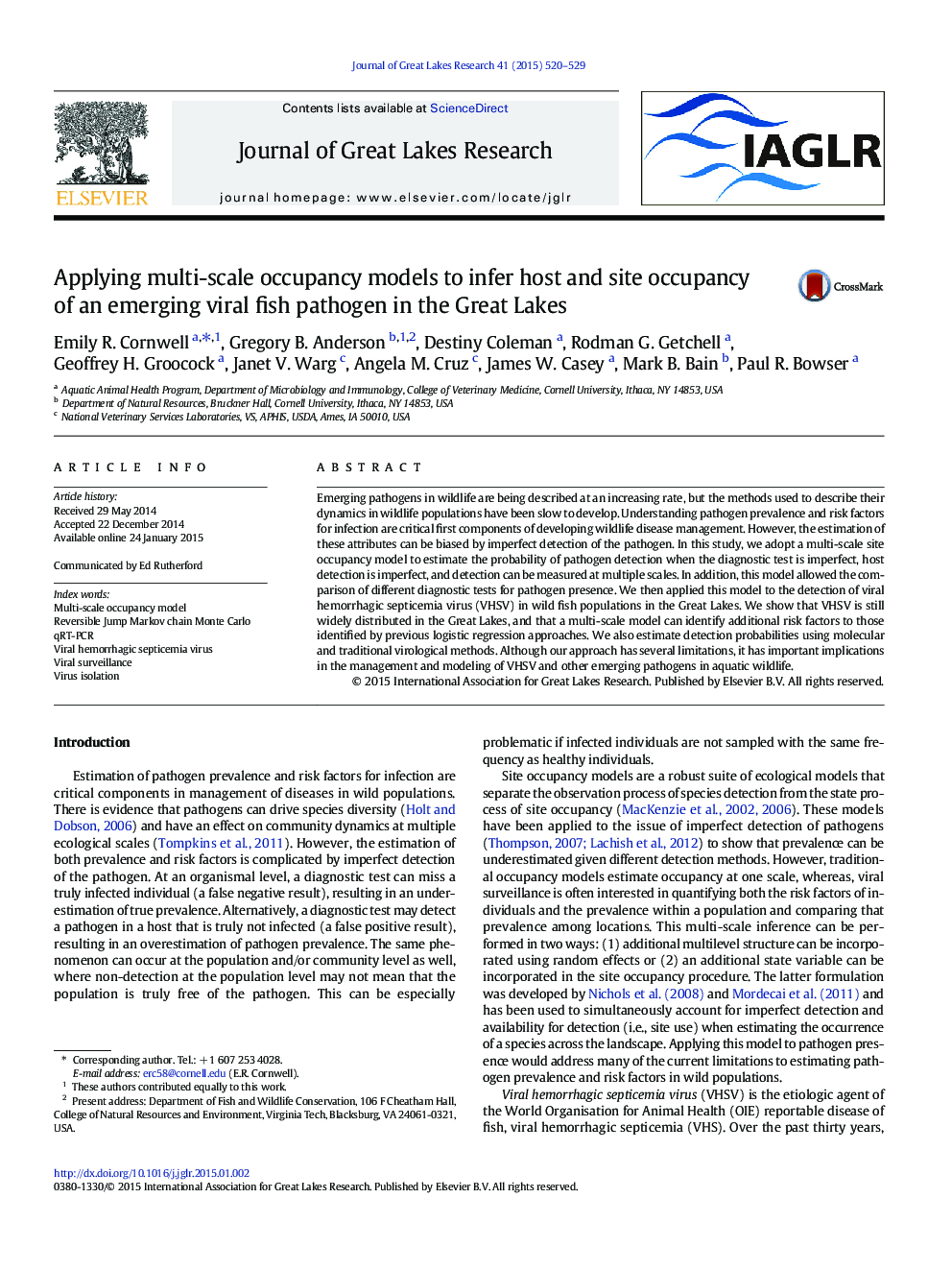| Article ID | Journal | Published Year | Pages | File Type |
|---|---|---|---|---|
| 6305029 | Journal of Great Lakes Research | 2015 | 10 Pages |
Abstract
Emerging pathogens in wildlife are being described at an increasing rate, but the methods used to describe their dynamics in wildlife populations have been slow to develop. Understanding pathogen prevalence and risk factors for infection are critical first components of developing wildlife disease management. However, the estimation of these attributes can be biased by imperfect detection of the pathogen. In this study, we adopt a multi-scale site occupancy model to estimate the probability of pathogen detection when the diagnostic test is imperfect, host detection is imperfect, and detection can be measured at multiple scales. In addition, this model allowed the comparison of different diagnostic tests for pathogen presence. We then applied this model to the detection of viral hemorrhagic septicemia virus (VHSV) in wild fish populations in the Great Lakes. We show that VHSV is still widely distributed in the Great Lakes, and that a multi-scale model can identify additional risk factors to those identified by previous logistic regression approaches. We also estimate detection probabilities using molecular and traditional virological methods. Although our approach has several limitations, it has important implications in the management and modeling of VHSV and other emerging pathogens in aquatic wildlife.
Keywords
Related Topics
Physical Sciences and Engineering
Earth and Planetary Sciences
Earth and Planetary Sciences (General)
Authors
Emily R. Cornwell, Gregory B. Anderson, Destiny Coleman, Rodman G. Getchell, Geoffrey H. Groocock, Janet V. Warg, Angela M. Cruz, James W. Casey, Mark B. Bain, Paul R. Bowser,
